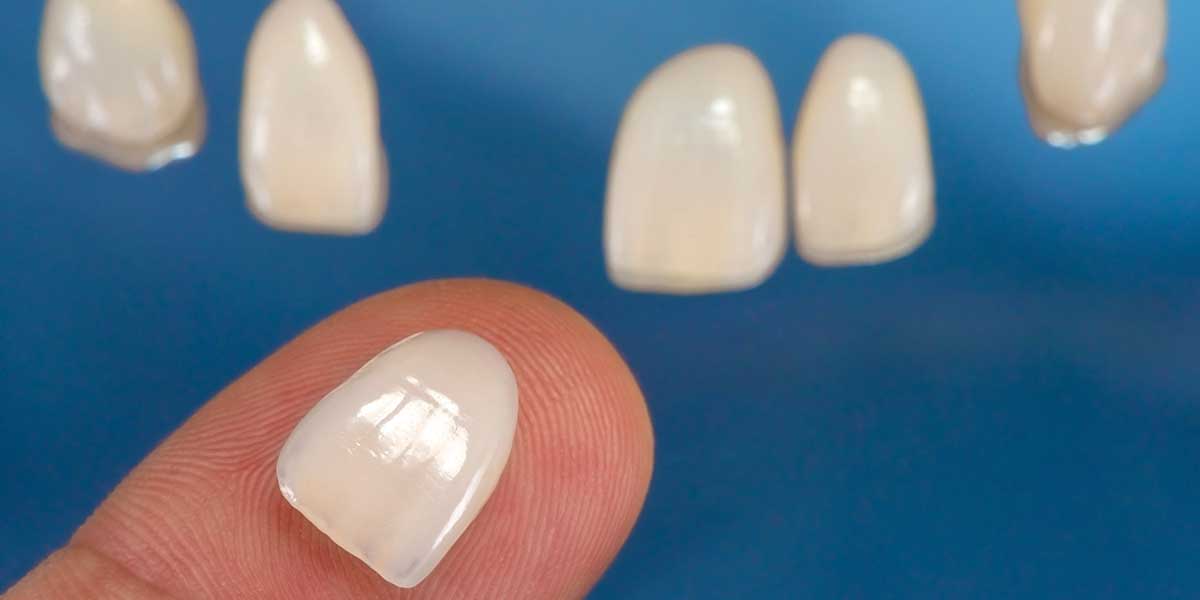Porcelain Veneers

What are porcelain veneers?
Porcelain veneers are thin shells of tooth-colored dental porcelain that are bonded to the teeth surfaces to improve their appearance. Most often veneers are applied to the top front teeth to create evenly proportioned teeth which will enhance your smile.
When a majority of the tooth is broken or decayed, the correct treatment is a dental crown which covers the entire tooth and provides strength and protection of the teeth for proper function. Veneers are a cosmetic procedure.
When are they recommended?
Dr. Trombetta may recommend porcelain veneers to treat discolored teeth, chipped or broken teeth, to improve the shape of irregularly shaped or small teeth, and can close gaps between the teeth.
What are the benefits of porcelain veneers?
- Porcelain offers the most natural aesthetic. It is tooth-colored, translucent like teeth, and reflects light like natural teeth.
- Porcelain is stain-resistant and chip resistant.
- It is very strong and durable.
- Porcelain is compatible with gum tissues.
- Porcelain veneers are used to improve the shape, color, size and/or length of your teeth.
- They are very thin, shells, so only a small amount of tooth structure must be removed.
- They only cover the front of a tooth and look just like your natural teeth.
- The color can be selected to make dark teeth lighter or whiter.
- They do not require special care.
- They last up to 15 years but can't be repaired if they break or chip.
What are the disadvantages of porcelain veneers?
- They cost more than bonding with a tooth-colored resin material but bonding lasts half as long as a veneer.
- Since some tooth structure is removed the teeth may be more sensitive initially.
- If a veneer cracks or breaks, it cannot be fixed, and must be replaced.
- Veneers are not a good option for people who grind their teeth.
- If the tooth with a veneer becomes decayed, it may need to be replaced with a crown.
- You may not be a good candidate for veneers if you have gum disease.
Your Consultation
At your consultation appointment Dr. Trombetta will examine your teeth and take x-rays and impressions of your teeth. She will ask about your goals for treatment and make recommendations including porcelain veneers for cosmetic smile enhancement. If you decide on porcelain veneers, and you would like brighter whiter teeth, she will recommend pre-treatment teeth whitening, and can match the veneers to the new brighter color.
The Procedure
A porcelain veneer is thin, but the tooth must be prepared to create space for the veneer. Tooth preparation is often accomplished under local anesthetic. Preparation requires grinding down the tooth structure by the exact amount necessary to seat the veneer. Any sensitivity is generally minor and short-term.
After preparing the tooth, an impression of the teeth receiving the veneers will be made and sent to a lab where it will be used to create your veneers. Temporary veneers are placed while waiting for the lab to engineer the permanent veneers.
Once the permanent veneers are received, you will return to the office where Dr. Trombetta will test the veneers to assure that they fit the prepared teeth and are a good color match for your teeth. Importantly, the color can be adjusted if needed with the color of the cement used. Then the teeth will be cleaned and etched to rough up the surface for a good strong bonding.
Bonding is the process of applying a special tooth-colored adhesive material to cement the veneer to the tooth. When she is satisfied that the veneer is a good fit and in the correct position, she will apply the adhesive to the veneer, apply the veneer to the tooth and use a special light to cure the material which bonds the veneer to the tooth. She will check the margins and bite and make adjustments as needed. Contact Marana Dental Care to schedule a consultation today.
